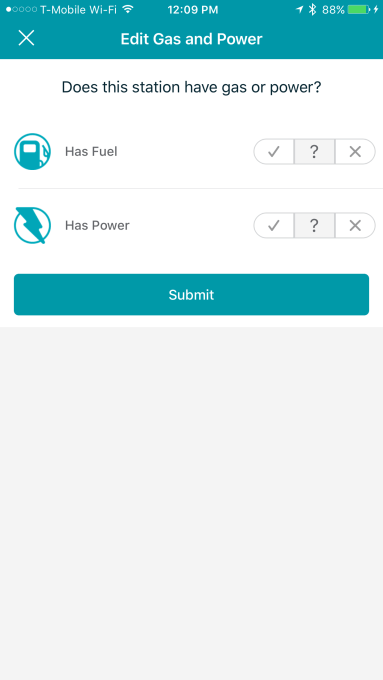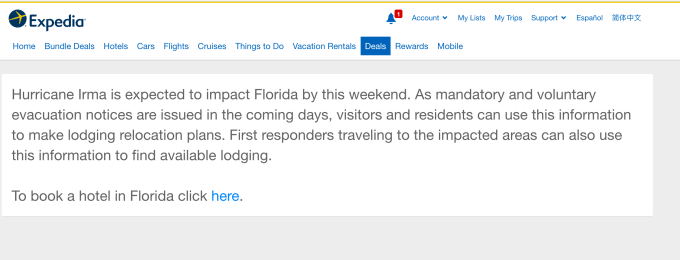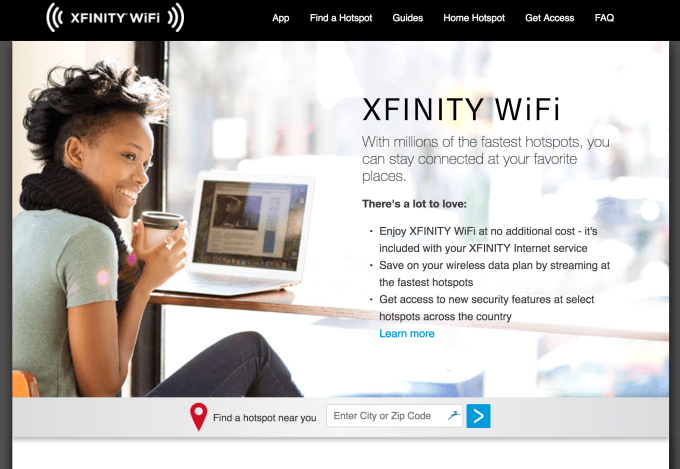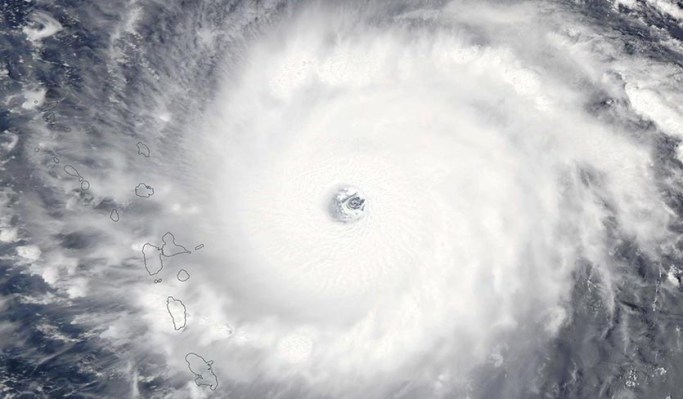Speaking at a press conference this morning, Florida Governor Rick Scott told state residents to turn to apps and other online resources, including Gas Buddy, Google Maps, Expedia and Comcast’s Xfinity Wi-Fi hotspot finder, to help them find fuel, navigate safely, and stay connected both ahead of and following Hurricane Irma’s arrival.
The lack of readily available gasoline, in particular, has been a huge problem facing the state – something that Scott admitted he knew had been “frustrating” in this time of crisis. Not only have some gas stations had long lines, many simply keep running out of gas entirely, as people prepare for possible evacuations by topping off their tanks.
Scott said the state is doing everything it can to deal with the fuel shortages, including working with gas companies, distributors, federal authorities, and other states to get more gas to the state. He said law enforcement will even be tasked with escorting trucks to gas stations so they can get there faster.
Related to this, the governor suggested that Florida residents use Gas Buddy if they’re having trouble finding somewhere to fill up.
“The Gas Buddy app is a great resource to find stations with fuel,” he stated.
Though better known as an app for finding the lowest-priced gas in your area, this solution has been spreading by word-of-mouth in local communities, as well.
As it did for Hurricane Harvey, the app has activated its fuel availability tracker, which displays the stations lacking power and/or fuel, as sourced from its user base. When you encounter a station that’s out, you can quickly note this in the app to help others. In turn, you can use this crowdsourced information yourself to locate gas stations that have fuel availability.
In an app update today, Gas Buddy says it made the icons for ‘no gas’ and ‘no power’ easier to read.
![]()
The company tells TechCrunch that it’s now seeing hundreds of gas stations across Florida, Georgia, North Carolina and South Carolina without fuel. It says the hardest hit cities are Miami (30% of stations are out of gas), West Palm Beach (29%), Fort Myers-Naples (20%), Tampa (13%), and Orlando (9% are out.)
The app has seen a ton of usage following Harvey and ahead of Irma – its App Store ranking has jumped 150 spots over the past week or so, and is now in the top 50 Overall.

In addition to Gas Buddy, Scott noted that the state was working with Google to keep its mapping app updated with the most current information on road closures.
“Real time traffic information and evacuation routes is available at FL511.com,” said Scott. “We have traffic cameras on every major roadway in the state and are clearing traffic issues in real-time so we can keep people moving,” he continued. “We’re coordinating with Google’s emergency response team to prepare to close roads in Google Maps in real-time in the event that Hurricane Irma forces a closure of any roads in the aftermath of the storm,” Scott added.
Of course, the Google-owned Waze app may be more useful ahead of Irma’s landfall. The crowdsourced navigation tool is great for finding out about traffic incidents, road closures, speeds, and other hazards in real-time as well. This information is additionally fed into Google.org’s Crisis Maps, which displays other details like precipitation, public alerts, evacuation routes, shelters, forecasts and more.

The governor also detailed other resources available to evacuees, including travel site Expedia.
“If you need a hotel, go to Expedia.com/florida,” said Scott. “Expedia is working on hotel occupancy in real-time.”
Scott noted that Comcast was opening 137,000 hotspots to help people stay connected, too. These Xfinity Wi-Fi hotspots will be made free across the state for non-Xfinity customers and subscribers alike. AT&T, Verizon, and T-Mobile are all setting up additional Wi-Fi hotspots as well, he said.

Beyond the official recommendations from the state, Apple has responded to the crisis in a timely fashion, as it usually does. Its App Store is currently featuring a collection of must-have apps for those in the path of the storm, as well as a button that allow you to donate to relief efforts through the Red Cross. (The button was rolled out in response to Harvey, but Red Cross will certainly allocate funds as needed.)
The App Store’s “Stay Safe After the Hurricane” collection includes a number of standard networking apps, like Facebook, Twitter, and Periscope, plus money transfer apps like Venmo and Cash App from Square. But it includes a few dedicated to storm tracking and alerts, too.
These include The Weather Channel; MyRadar NOAA Weather Radar, Forecasts & Storms; FEMA’s app; and the Red Cross’s Hurricane app and Emergency Alerts & Notifications app. The offline texting app from Firechat and Gas Buddy are in this collection, as well.
Google doesn’t currently have a similar collection on Google Play’s app store, but a few hurricane tracking apps are appearing in the Trending section. (Update, 9/8/17: Google has now rolled out its own collection of hurricane apps.)
A full list of resources and other information is available here.
